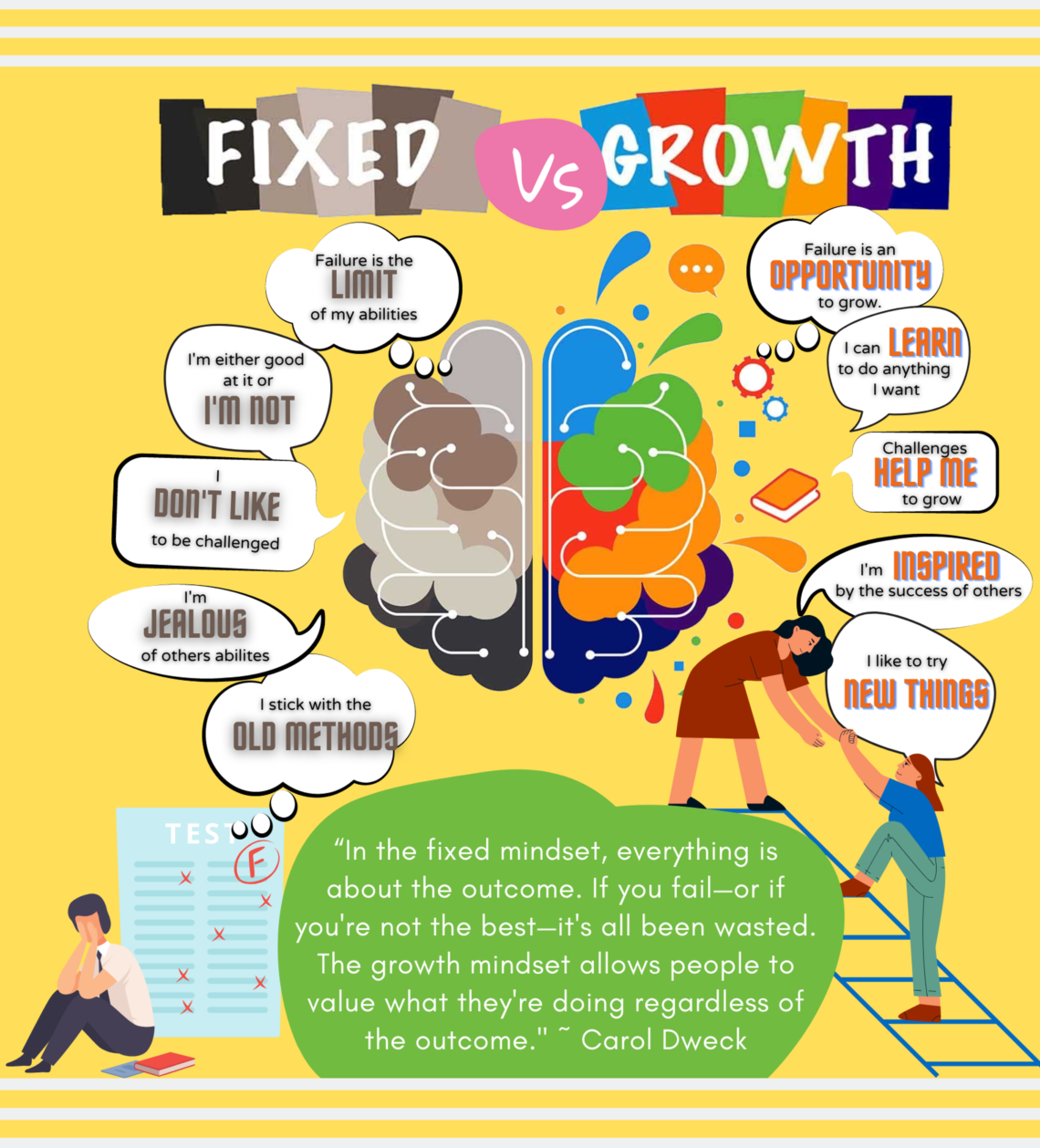
Avoid the False Mindset
Educators did not understand how to fully implement a growth mindset as this is a long process. This led to a wave of false growth mindsets across the nation as a counter to the failed self-esteem movement. In reality, the growth mindset was used to perpetuate the feel good movement and students were just told great effort without filling their learning gaps.
“Poor Lucia, just telling her that she needs to change her mindset isn’t helpful, neither is praising our own students without a follow up. “
As wonderful as a growth mindset can be, implementation is not as simple as just willing a growth mindset into being. When I learned of the growth mindset and shared it with our science department, I was saddened that they were dismissive of this fantastic concept. I was confused and lost: if these educators were aware of this concept why did they not implement it? So I did what any good scientist would do, I researched why my colleagues dismissed this concept. The results disappointed me as I uncovered the truth about why so many dismissed the growth mindset. Just like so many times before, when a great concept is introduced into the school systems the message is clear: this will help children. As educators, we have heard this before from our administration. However, they approached the new idea with caution and skepticism and the message ended up muddled. Educators agreed with the concept in theory, but they did not change their thinking due to lack of clear guidance or enforcement. This process is not as simple as just saying have a growth mindset. These educators did not understand how to fully implement a growth mindset as this is a long process, fostering future cynicism and dislike for grand ideas that help students.
These failures led to a wave of false growth mindsets across the nation as a counter to the failed self-esteem movement. In reality, the false growth mindset only perpetuated the “feel-good” movement and students were just told “Great effort!” without filling their learning gaps. Telling someone “Great effort!” without counseling them on what they need to improve is only a partially implemented growth mindset plan. Students do not feel good when they do not understand and have no path to understanding. This lack of complete implementation leads educators to blame the student’s mindset instead of looking at the issues. When this occurs, the educator’s mindset is blatantly obvious to an outsider who understands the growth mindset. These educators failed to properly implement a growth mindset in their own lives. These teachers harbor what is now known as the false growth mindset. They used the buzzwords and stopped without going through the other vital steps.
A growth mindset is the understanding that success comes from time and effort rather than some innate ability. Growth mindset is contrasted against the fixed mindset that believes a person has innate ability that is unchanging. The vast majority of people have a mixed mindset, with many leaning to one side or the other. The most important reason to study these mindsets is to understand that through practice a person has the ability to learn to think in a growth mindset and they can accomplish tasks with effort and perseverance. This is why the concept of “not yet” is so important. A person who thinks in a growth mindset knows they can achieve their goals and setbacks are met with the idea of “I have not mastered this yet” instead of a fixed mindset that would not have even tried or given up as soon as it got too hard.
The long process of changing one’s own mindset must be understood before one can properly implement the plan. The biggest pitfall on our road to change is not accidenatlly using the wrong mindset, but believing you are using a growth mindset when you are really using a fixed one (Dweck 2015). This means that you have to actively acknowledge that your mindset will take time to change and not to give into failure meaning you cannot change. Educators that use the following steps will avoid a false growth mindset.
Step 1: recognize when you have fixed mindset thoughts.
Step 2: realize that you have a choice on how to react to setbacks.
Step 3: counter your fixed mindset thoughts with growth mindset thoughts.
Step 4: take action on your growth mindset thoughts.
This means that you have to actively acknowledge that your mindset will take time to change and avoid the feeling that failure means you cannot change. You must believe that if you use the strategy to avoid the false growth mindset, you can change. Many educators across our district would benefit from a new introduction to a proper growth mindset; however, this concept cannot be delivered in a single day of professional development. To implement the plan properly, each department across our district should have a person who is fully trained and vetted on their ability to use the growth mindset. Only then can they take this back to their respective departments and work on training the rest of the teachers. Each department needs an expert, and these coaches can help educators when they are deploying the wrong mindset and guide their thoughts and behaviors. Educators require this expert to play the role of a sounding board in order to ensure they are on the right track. Professional development will be enriched with this behavior, as modeling these practices will lead to the greatest motivation. To deploy this properly, educators should look at this concept more like training people on how to play and master a sport. This metamorphosis will take significant effort to deploy properly, but the benefits of filling learning gaps and motivating students is always a worthy reward.

Follow me on this pathway to a growth mindset by developing these 8 skills:
1. Listen to the mindset voice inside of you
- Is your voice fostering a growth or a fixed mindset. Do you often concern yourself with failing? Realize what internal voice you are deploying and counter any fixed mindset thoughts with a growth mindset.
2. Recognize that you have a choice.
- You have the ability to choose which mindset to follow.
3. Talk back with a growth mindset voice.
- You must analyze your thoughts and actively decide to talk back with a growth mindset.
4. Practice
- Take on new or difficult challenges. Do not back down from the learner who wants to disengage, but use your growth mindset to motivate them.
5. Find outside help
- This process is challenging, your default mode will challenge you each step of the way. An accessible coach is vital to the successful deployment of a growth mindset in our learning.
6. Stop seeking approval from others
- Comparing yourself to others focuses you on a fixed mindset. Stop worrying about what others are saying and use the opportunity as a motivation to grow.
7. Embrace the “yet” not the failure
- Recognize that not mastering a concept is not failure, but a process on the path of understanding and learning. This is not a copout statement, if the learner fails to understand the concept do not say good effort and move on. Make a plan to help the learner master the task.
8. Take a growth mindset action
- This is a process and like any skill you must work on mastering that skill. This requires an active engagement on your part to master the skills required to move into a growth mindset. Turn setbacks in your thinking process as an opportunity to learn how to deploy the growth mindset.
These steps require mastery, and are a work-in-progress for most people. According to Carol Dweck this could take a lifetime to master. As educators redeploy this method, they must do so with the realization that a growth mindset is something you want to achieve but a fixed mindset is always lurking around the corner to spoil your thoughts.





